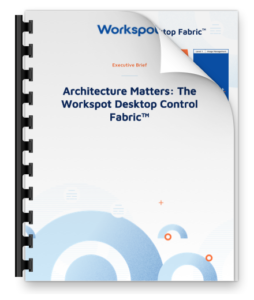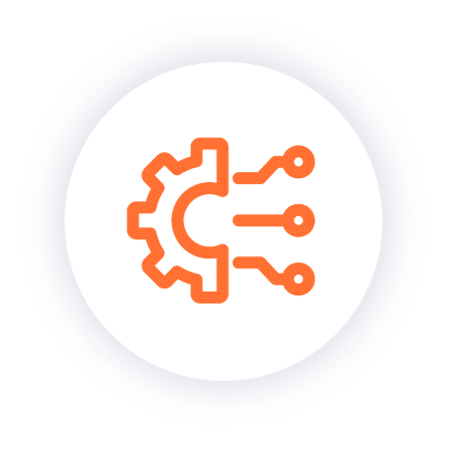For Cloud Desktops, Cloud-Native Matters. Here’s Why.
The pandemic has underscored the business productivity and resilience benefits of virtual desktops. However, as we have often pointed out, the results you can achieve vary dramatically based on the virtual desktop approach you decide to take. An early decision point is whether you want to take a “do-it-yourself” (DIY) approach to your virtual desktop solution, or if software-as-a-service (SaaS) is a better fit. Either way, your next conversation must be about the solution architecture.
The Workspot Enterprise Desktop Cloud platform is based on a cloud-native architecture. It means that unlike other approaches which are based on outdated, single-tenant architectures designed for a single data center, Workspot cloud desktops are ready for the massive cross-cloud scalability afforded by the cloud hyperscalers, such as Microsoft Azure and Google Cloud. Workspot offers superior performance, security and scalability capabilities that simply aren’t possible with other solutions. That’s a bold statement, but it’s our cloud-native foundation that makes all the difference.
Let’s take a quick look at the other virtual desktop approaches so we can more clearly see the difference between what old-school architectures deliver vs. what a cloud-native architecture brings to the business. Although on-premises implementations are waning, for completeness we touch upon them here to emphasize the limitations inherent to their architectures.
Traditional approaches to virtual desktops
Legacy VDI
The best way to think about legacy VDI is that it is a do-it-yourself toolkit. You buy a VDI broker/provisioning engine, servers, storage, networking, and monitoring tools to be deployed in your own data center, and then you hire consultants to design and/or build the solution stack, which makes the upfront financial commitment astonishingly high just to get your first desktop live. After many months – possibly years – you can roll out the solution to more users. Your IT team is responsible for desktop reliability – they must update all the many piece parts of the solution and troubleshoot a complex infrastructure when an issue arises. These challenges are well understood in the IT world. What is less well understood is that because this type of solution often presents with serious performance issues for remote users, and because it is very difficult to scale when the business demands it, legacy VDI actually inhibits flexibility and therefore slows your business down.
Legacy DaaS
Legacy DaaS involves a Managed Service Provider (MSP) running someone else’s VDI solution in their datacenter. All of the same rigidity and complexity is there, it’s just not in your data center anymore. Now someone else is dealing with it for you and charging you for it. Do you have new business requirements that would be addressed by a new feature? Who ya gonna call? You are so far removed from the vendor that owns the technology that any feature requests you may have go unheard. Need to scale up in minutes or hours? Good luck. The reality is that the MSP model makes virtual desktop deployment and management even more costly and complex. And you still have the same performance problems, because just as there is no way you can support multiple data centers around the world, your MSP can’t do it either.
Cloud approaches to virtual desktops
Legacy VDI in the Cloud (aka Control-Plane-As-a-Service)
Here’s where the rubber meets the road. The vendors who offer legacy VDI also host those solutions in the cloud. They are “cloud-enabled.” That’s a very different thing than being cloud-native, and in the era of massively scalable cloud solutions, that’s a problem, because these cloud-enabled approaches are not massively scalable! You can’t add new cloud desktops across multiple clouds, or multiple cloud regions, on-demand, which means your ability to react to business dynamics is constrained. “Control- Plane-As-a-Service”, uses someone else’s infrastructure (i.e. public cloud infrastructure), but you still have to implement and manage all the components of legacy VDI. It’s exactly like on-premises VDI, but you implement all the piece-parts on public cloud infrastructure instead of in your own data center. It’s the same single tenant, one-data center architecture – it’s just that it got dropped into a public cloud region, whether that’s Microsoft Azure, Google Cloud or Amazon Web Services. This means that you still run into the same old performance and scalability problems. A single cloud region implementation can work if you’re a small or medium size company with employees all in the same cloud region. But if you’re a global enterprise with employees and contractors all over the world, anyone who is remote from your single-cloud-region implementation is going to experience latency, and therefore poor app performance. What can you do? You have to duplicate the control plane and all those VDI piece-parts into every, single cloud region in which you want to deploy cloud desktops. That takes an inordinate amount of IT resources to implement and manage on an ongoing basis. It’s not sustainable. With this approach you encounter the same high costs, the same complexity, the same rigidity, and the same lack of business agility as with on-premises VDI.
100% cloud-native DaaS
A cloud-native architecture is what allows you to eliminate the complexity, poor performance, and scalability limitations of legacy VDI, legacy DaaS. and Control-Plane as-a-Service. There are only two cloud-native, cloud desktop solutions, and only one is enterprise-ready and multi-cloud: the Workspot Enterprise Desktop Cloud platform. With Workspot, you’re subscribing to a SaaS solution for delivery of your cloud desktops. You don’t mess with all the piece-parts at all. We do it for you. Plus, everything is customizable to suit your unique requirements. Use your Windows 10 corporate image, your management tools, your security policies, including MFA, and more. It’s great for IT because there’s no learning curve, and they no longer have to deal with tedious desktop maintenance tasks. Our world-class Customer Success Team stays with you for the long term to help address your evolving business requirements. Since we invented the technology and run the cloud desktops service, feature ideas from our customers are often rolled into the product and made available for everyone. End users love the performance. Even our customers who require high-performance computing cannot believe the low-latency experience. Their most demanding users simply love it for the speed and for the freedom it gives them to work anywhere. The business benefits from increased productivity and turn-on-a-dime flexibility that enables you to scale up immediately for new opportunities.
Here’s what you can expect from our service. I hope these in-depth resources are helpful to you in your evaluation.
- Fast time-to-value
- On-demand scalability
- High availability
- Pricing that supports their business model
- Globally available
- Performance that makes users happy
- Easily supports new use cases
All of these requirements impact business agility and productivity; they are exactly the right things to expect, and only a cloud-native DaaS solution can deliver them. Workspot eliminates the complexity of legacy solutions and physical PC management, solves notorious VDI performance problems, and brings new levels of security, flexibility, and agility to the business. That all adds up to a formula for innovation and business growth!
To see for yourself how it works, schedule a demo with us and we can talk through your unique requirements.




